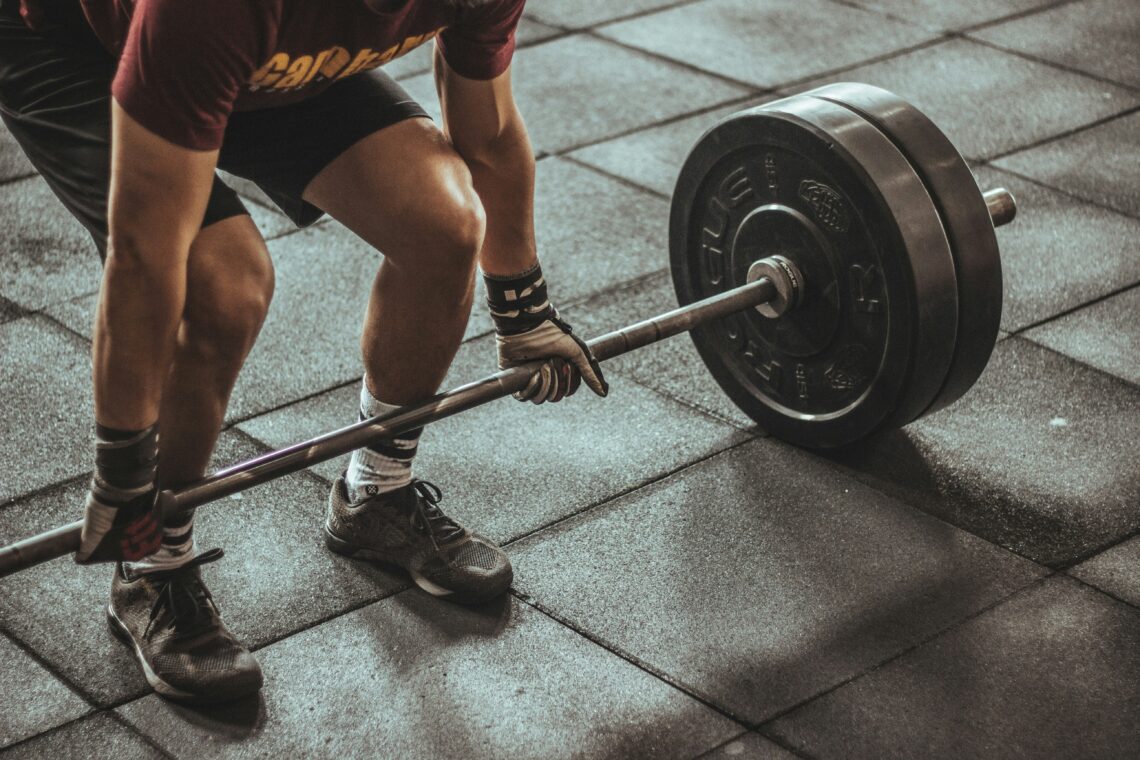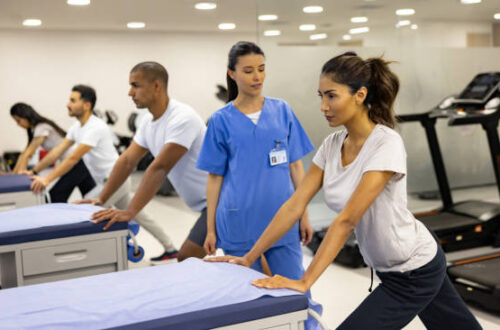Let’s be real for a minute. The thought of getting fit and building muscle can feel like a luxury you just can’t afford. Between tuition, textbooks, and the occasional coffee run to fuel a study session, a pricey gym membership or fancy home equipment just isn’t in the budget. And who has the time to spend hours at the gym anyway, when you’re juggling classes, homework, and maybe a part-time job?
I’ve been there. I know the struggle. But here’s the good news: building a strong, healthy body doesn’t require a wallet full of cash or a gym with all the bells and whistles. In fact, some of the most effective ways to build muscle can be done right in your dorm room, a park, or even your living room.
This guide is all about showing you how to get real results using the one piece of equipment you already have: your own body. We’ll talk about simple, powerful exercises, smart nutrition tips that won’t drain your bank account, and how to create a routine that actually fits into your student life.
Let’s ditch the excuses and get to building some serious strength!
The Secret to Muscle Growth: Bodyweight Exercises
Contents
- 1 The Secret to Muscle Growth: Bodyweight Exercises
- 2 Taking it to the Next Level: Advanced Bodyweight Moves
- 3 Eating Smart: Fueling Your Body on a Student Budget
- 4 The Most Important Part of Building Muscle: Rest and Recovery
- 5 Putting it all Together: Creating Your Simple Routine
- 6 Final Thoughts: Your Fitness Journey Starts Now
- 7 FAQs: Your Quick Questions Answered
You might think you need heavy weights to build muscle, but that’s a common myth. Your body is a powerful tool for resistance training. Every time you push, pull, or lift your own weight, you’re challenging your muscles in a way that forces them to get stronger and grow. This is the foundation of calisthenics, and it’s the perfect solution for students.
The best part? These exercises are often “compound movements,” meaning they work multiple muscle groups at the same time. This saves you time and makes your workouts super-efficient. You’ll be surprised at how much you can achieve with just a little space and some dedication.
The Foundational Four: Your Core Muscle-Building Exercises
If you only have time for a few exercises, these are the ones to focus on. They target your entire body and are the building blocks of any good bodyweight routine.
- Push-ups (Upper Body): Push-ups are the king of upper-body exercises. They build your chest, shoulders, and triceps, and they also engage your core.
- How to do them: Start in a high plank position with your hands slightly wider than your shoulders. Lower your body until your chest is just above the floor, then push back up. Keep your back straight and your core tight.
- Pro-tip for beginners: If a regular push-up is too hard, start with your knees on the ground or place your hands on an elevated surface like a desk or a bed. As you get stronger, you can move to your toes.
- Squats (Lower Body): Squats are incredible for building your legs and glutes. They’re a fundamental movement that helps with everything from climbing stairs to lifting heavy things.
- How to do them: Stand with your feet a little wider than your hips. Pretend you’re sitting back in a chair, keeping your chest up and your back straight. Go as low as you comfortably can, then push through your heels to stand back up.
- Pro-tip for an extra challenge: Try holding the squat position for a few seconds at the bottom. This increases the “time under tension” and really makes your muscles work.
- Lunges (Lower Body): Lunges are another fantastic leg exercise that also helps with balance and stability.
- How to do them: Take a big step forward with one leg and lower your hips until both knees are bent at about a 90-degree angle. Your front knee should be over your ankle, and your back knee should be just above the floor. Push back to the starting position and repeat with the other leg.
- Planks (Core): A strong core is the center of all strength. Planks work your entire core, including your abs, obliques, and lower back.
- How to do them: Start in a push-up position or on your forearms. Keep your body in a straight line from your head to your heels. Don’t let your hips sag or stick up too high. Hold this position for as long as you can.
- Pro-tip for a challenge: Try lifting one arm or one leg at a time while holding the plank. This makes your core work even harder to keep you stable.
Elevating Your Workouts with Household Items
You don’t need to buy a dumbbell set. Your dorm or home is full of free “equipment” you can use to add resistance.
- Backpack with Books: Fill a backpack with heavy books and wear it for squats or lunges. This simple trick adds extra weight and makes the exercises more challenging.
- Sturdy Chair or Bed: Use the edge of a chair or your bed for tricep dips. Just sit on the edge, place your hands on either side of your hips, and lower your body by bending your elbows. It’s a killer for your triceps!
- A Doorframe: Use a sturdy doorframe or a playground bar to do pull-ups or inverted rows. These are essential for building a strong back and biceps. If a full pull-up is too difficult, a simple doorframe row where you lean back and pull yourself up is a great starting point.
- Water Jugs or Laundry Detergent: Fill up empty milk jugs or a laundry detergent bottle with water or sand. You can use these for bicep curls, overhead presses, or rows. It’s the perfect makeshift weight!
Taking it to the Next Level: Advanced Bodyweight Moves
Once the foundational exercises become too easy, it’s time to challenge yourself. Progression is the key to continued muscle growth, and you can achieve it by increasing the difficulty of your exercises.
Progressive Overload in Practice
- For Push-ups:
- Decline Push-ups: Place your feet on an elevated surface like a bed or chair. This puts more of your body weight on your chest and shoulders, making the exercise much harder.
- Archer Push-ups: Start in a wide push-up position. As you lower your body, shift your weight to one side, straightening the other arm out. This is a great way to work towards a one-handed push-up.
- For Squats:
- Jump Squats: Add a powerful jump at the end of each squat. This adds an explosive element, building both strength and power in your legs.
- Bulgarian Split Squats: Stand with one foot on a chair behind you. Lower your body with your front leg. This is a single-leg exercise that seriously targets your quads and glutes.
- For Back and Biceps:
- Inverted Rows: Find a sturdy table. Lie on your back underneath it and grab the edge with both hands. Pull your chest up to the table. This is one of the best exercises for building your back muscles without a pull-up bar.
The goal is to keep pushing your muscles just a little bit further each time. If you can do 15 perfect push-ups, try 15 decline push-ups next time. If you can do 3 sets of squats, try doing them with a backpack full of books.
Eating Smart: Fueling Your Body on a Student Budget
Building muscle isn’t just about working out; it’s also about what you eat. You need the right fuel to repair and grow your muscles. But eating healthy as a student can feel impossible when ramen and pizza are so cheap and easy. Don’t worry, I have some wallet-friendly nutrition tips for you.
The Power of Protein on a Budget
Protein is the building block of muscle. You need to make sure you’re getting enough of it, even on a tight budget.
- Eggs: Eggs are a nutritional powerhouse and are super cheap. They’re an excellent source of protein and healthy fats. Scrambled eggs for breakfast or a hard-boiled egg as a snack are great options.
- Beans and Lentils: These are incredibly cheap, versatile, and packed with protein and fiber. You can add them to soups, salads, or make a simple bean chili.
- Canned Tuna or Chicken: Canned fish and chicken are a quick, easy, and affordable way to get a protein boost. Make a tuna sandwich or add some canned chicken to a salad for a simple meal.
- Oats: Oats are not just for breakfast. They’re a great source of slow-releasing energy and can be a base for savory meals. Pair them with some milk and a spoonful of peanut butter for a protein-rich meal.
Beyond Protein: The Importance of Carbs and Fats
Protein is crucial, but don’t forget about your other two macronutrients.
- Carbohydrates: Carbs get a bad rap sometimes, but they are your body’s main energy source. Without them, you won’t have the fuel to power through your workouts. Stick to whole grains like brown rice, oats, and whole-wheat bread. Potatoes and sweet potatoes are also great, cheap options.
- Healthy Fats: Healthy fats are essential for hormone production and overall health. Don’t be afraid to eat them! Affordable sources include peanut butter, nuts, and avocados.
Simple Tips for Smart Eating
- Cook in Bulk: Take one day a week to cook a large batch of something. Think a big pot of chili, a tray of roasted vegetables, or some grilled chicken. This saves you time and money, and it means you always have a healthy meal ready to go.
- Drink Water: Staying hydrated is crucial for muscle function and overall health. Keep a reusable water bottle with you at all times. It’s free and it’s one of the best things you can do for your body.
- Smart Snacking: Instead of grabbing a bag of chips, which offers no real fuel, grab an apple with a spoonful of peanut butter, a handful of nuts, or some Greek yogurt. These snacks provide sustained energy and help keep you full and focused.
The Most Important Part of Building Muscle: Rest and Recovery
You might think that muscle growth happens during your workout, but the truth is, your muscles grow when you’re resting. When you work out, you create tiny tears in your muscle fibers. During rest, your body repairs these tears and makes the muscle stronger than it was before. This is why rest days are so important!
The Secret Weapon: Sleep
Getting enough sleep is arguably more important than any single workout. Aim for 7-9 hours of quality sleep per night. When you sleep, your body releases human growth hormone, which is essential for muscle repair and growth. Plus, a good night’s sleep makes you feel more energized for your next workout and for your studies.
Dealing with Soreness and Overtraining
If you’re new to working out, you’ll probably feel a little sore the next day. This is called Delayed Onset Muscle Soreness (DOMS), and it’s totally normal. Here’s how to manage it:
- Active Recovery: On your rest days, don’t just sit on the couch. Go for a light walk, do some gentle stretching, or try a bit of yoga. This increases blood flow to your muscles, which can help them recover faster.
- Hydration: Drinking plenty of water can help flush out the byproducts of muscle breakdown.
- DIY Foam Rolling: You don’t need a foam roller. You can use a tennis ball or even a frozen water bottle to apply pressure to sore muscles. This can help release tension and improve blood flow.
It’s also important to avoid overtraining. If you feel constantly exhausted, can’t sleep, or your performance is getting worse, you might be pushing too hard. Listen to your body and don’t be afraid to take an extra rest day.
Putting it all Together: Creating Your Simple Routine
The key to success is consistency. It’s better to do a simple 20-minute workout three times a week than to try a super-intense one-hour session that you’ll never stick with.
Here’s a sample weekly routine that’s easy to follow:
- Monday (Full Body): Do 3 sets of each of the Foundational Four exercises.
- Tuesday (Active Rest): Take a walk around campus or do some light stretching.
- Wednesday (Full Body): Repeat Monday’s routine, but try a more challenging variation. (e.g., elevated push-ups to regular push-ups).
- Thursday (Active Rest): Use your commute to walk or bike to class.
- Friday (Full Body): Repeat the workout again.
- Saturday & Sunday (Rest): Give your muscles a chance to recover. Maybe do some light yoga or just relax!
A note on “Progressive Overload”: This is the single most important rule for building muscle. It means you have to constantly challenge your muscles to get stronger. Don’t just do the same workout forever. Once you can do 15 perfect push-ups, it’s time to try a harder variation or add a backpack for resistance.
Final Thoughts: Your Fitness Journey Starts Now
Remember, building muscle is a marathon, not a sprint. It’s about creating healthy habits that you can stick with for the long term. As a student, your time and money are valuable, and this guide is all about helping you make the most of both.
You don’t need an expensive gym membership to be strong. You don’t need fancy equipment to get fit. All you need is the space in your room, a bit of discipline, and the willingness to start.
Your fitness journey can begin today, with a simple push-up or a set of squats. So go on, give it a try. You’ve got nothing to lose, and a whole lot of strength to gain.
FAQs: Your Quick Questions Answered
Q: Do I need to take protein powder to build muscle? A: No, you don’t! While protein powder can be a convenient way to get extra protein, it’s not necessary. You can get all the protein you need from whole foods like eggs, beans, tuna, and chicken. Save your money and eat well!
Q: How often should I work out to see results? A: Aim for 3-4 times a week. This gives your muscles enough time to recover and grow. Consistency is more important than the intensity or length of your workouts.
Q: Can I really build muscle without a gym? A: Absolutely. Bodyweight exercises like push-ups, squats, and lunges are incredibly effective for building muscle and strength. Many people have built amazing physiques without ever stepping foot in a gym.
Q: What if I’m too sore to work out again? A: That’s a sign your muscles are working! It’s important to listen to your body. On days when you’re sore, do an active rest day—go for a light walk or do some gentle stretching. Give yourself a rest day and come back stronger when you’re ready.
Q: How long does it take to see results? A: Patience is key. You might feel stronger within a few weeks, but visible changes usually take a few months of consistent effort with both your workouts and your diet. Stick with it, and the results will come.
Q: Is it okay to do cardio while trying to build muscle? A: Yes! Cardio is fantastic for your heart and overall health. Just make sure you’re not overdoing it. A good balance is to do your strength training first, and then add 15-20 minutes of cardio. A brisk walk or a bike ride is perfect and won’t hurt your muscle gains.
Q: How can I stay motivated when I’m so busy? A: Focus on how you feel, not just how you look. Notice how much more energy you have after a workout or how much less stressed you feel. Set small, achievable goals, like doing 5 more push-ups than last week. And remember, a bad workout is better than no workout at all.





